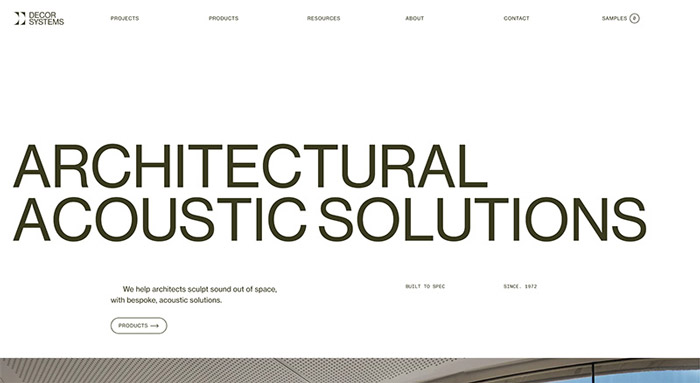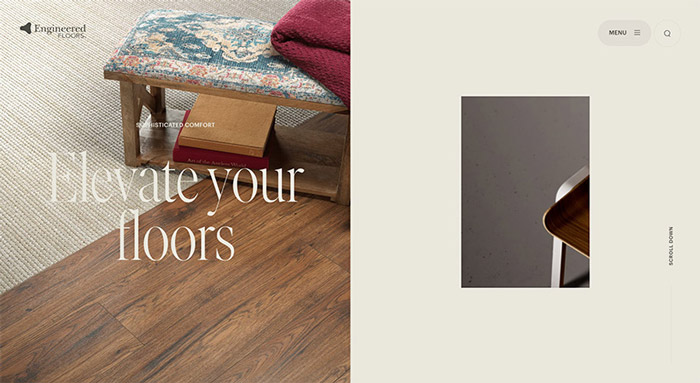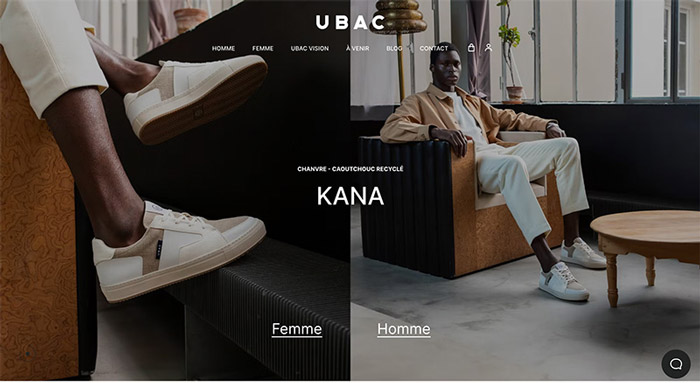- 首頁
- Blog
- What Are Web Development and Web Design? The Two Pillars of Building Successful Web Solutions
What Are Web Development and Web Design? The Two Pillars of Building Successful Web Solutions
2025 / 11 / 19
In the process of providing web solution services, we have identified a common misconception among many clients: the belief that "once the design mockup is complete, the website is finished."
In reality, a design mockup is merely a visual representation of the website. Transforming it into a functional, live website requires a series of complex conversion processes, including writing code, setting up databases, and building backend functionalities. This process involves two crucial domains of knowledge: Web Development and Web Design.
What Are Web Development and Web Design? The Two Pillars of Building Successful Web Solutions
● Web Design: Crafting a Digital Experience that Balances Aesthetics and Intuition
Web Design is an interdisciplinary field that merges "Visual Aesthetics" with "User-Centric" principles. Its core objective is to create website interfaces that are both attractive and functional. As the digital facade of a brand, web design not only determines the user's critical first impression but also profoundly influences the fluency of their interaction and overall satisfaction with the website experience.
Its core elements include:
Layout Design: Establishes a clear visual hierarchy and guided pathways through structured grid systems, ensuring harmonious content presentation and enhancing reading comfort and information absorption efficiency.
Color Strategy: The systematic application of brand colors can create an atmosphere, evoke emotional resonance, and reinforce brand identity. Precise color schemes effectively guide the user's attention, highlighting core calls-to-action and key information.
Typography: Selecting typefaces that align with the brand identity while ensuring optimal readability. Appropriate typography shapes the brand personality through text—conveying elegance, dynamism, or professionalism—and deepens the reading experience.
Visual Elements: High-resolution images and illustrations can instantly capture attention, enhancing narrative appeal and quality. Concise and precise icons facilitate the intuitive understanding of complex concepts and functionalities.
Navigation Design: Constructing intuitive menus and browsing pathways acts as the website's roadmap, assisting users in seamlessly exploring content and efficiently reaching target pages, thereby reducing search effort.
Interaction Design: Meticulous planning of interactive components like buttons, forms, and animations ensures their feedback is smooth and meets user expectations. This is not just functional implementation but a bridge to building trust and fostering a friendly dialogue with users.
Responsive Design: Guarantees the website delivers a complete and consistent browsing experience across all devices (desktops, tablets, mobile phones). Through flexible layout adjustments, content and functionality are perfectly presented on any screen size.
● Web Development: Building a Stable and Efficient Technical Core
Web Development forms the technical skeleton and functional core of a website, focusing on translating the design blueprint into a stable, secure, and fully-featured online platform. Similar to structural engineering in construction, it uses programming languages as its foundation, giving the website life and dynamism, ensuring it operates reliably within the complex network environment.
Its core elements include:
Frontend Development: Responsible for implementing the visual and interactive layer that users directly engage with. Frontend developers use HTML to structure content, CSS to define visual styles, and JavaScript to imbue the page with dynamic behavior and logic, transforming static designs into lively, operable user interfaces.
Backend Development: Focuses on the underlying logic executed on the server-side—the engine that powers the entire website, unseen by users. Backend development manages databases for storing and processing all dynamic data (e.g., user information, product catalogs, article content). Utilizing server-side languages (e.g., PHP, Python, Node.js, Java) and related frameworks, it constructs the website's core business logic, user authentication, and data exchange mechanisms, ensuring system stability, security, and high performance.
To provide a clearer understanding of the distinction between Web Design and Web Development, we have compiled their concepts into a comparative table:
In summary, Web Design aims to create a visually captivating, intuitively operable digital space that accurately conveys brand value, offering users a smooth and enjoyable sensory and interactive journey. The ultimate goal of Web Development is to build a robust, secure, scalable, and responsive technical backend, enabling users to access information and services seamlessly within a reliable and efficient environment.
Why Shouldn't Web Design and Web Development Be Conducted Separately?
Overly Idealized Designs, Difficult to Implement: Designers might pursue overly complex animations that sacrifice loading speed and performance, create interfaces that cannot effectively integrate with backend logic, or design responsive layouts that are impractical to implement, leading to significant challenges or failure to realize the design intent.
Unauthorized Adjustments by Developers, Diverging from Expectations: Without thorough handover of details, developers might alter colors, spacing, or layouts, misinterpret interactive effects, or sacrifice visual consistency for code optimization, resulting in a final product that deviates significantly from the intended design.
Schedule Delays and Soaring Communication Costs: Lack of synchronized workflows can lead to developers waiting for incomplete designs, frequent revisions due to missing elements discovered mid-development, or even rework caused by unclear functional logic, all delaying the project timeline and increasing overall costs.
Subpar End-User Experience: Without a shared user-centric focus, the website might suffer from confusing navigation, poor mobile experience, or confused information hierarchy, directly impacting the website's effectiveness and user satisfaction.
Consequently, treating design and development as separate, non-intersecting tracks can easily lead the final website into an awkward state of being a "neither-fish-nor-fowl" hybrid.
How Do Web Design and Web Development Collaborate to Build a Successful Website?
Early Joint Involvement: Laying the Project Foundation: From the project's outset, both design and development teams should participate in requirement discussions and planning. This cross-functional collaboration ensures design concepts are technically feasible from the start, while the development team gains early understanding of the design logic and goals, enabling more accurate technology selection and architecture planning.
Dynamic Synchronization During Design: Aligning in Real-Time, Preventing Issues: The process shouldn't be linear (design finish -> handoff to development). Designers should consult developers on the feasibility of complex animations and interactions before finalizing them, considering performance costs. This early synchronization helps identify potential problems sooner, significantly reducing late-stage revision time and costs.
Establishing a Design System: Ensuring Consistency and Efficient Development: Building a comprehensive Design System is key to ensuring cross-team consistency and improving efficiency. It includes brand color and typography guidelines, standardized styles for components (buttons, forms, cards), layout rules (spacing, grids), and defined interaction states. This provides developers with a clear, unambiguous blueprint, preventing subjective interpretation and ensuring output quality.
Precise Design Handoff: Providing Clear Specifications and Interaction Documentation: When delivering design mockups, include detailed interaction notes and specification markups. This covers animation triggers/duration/easing, differences between desktop/mobile versions, component states (normal, hover, active), and API information for frontend-backend integration. This minimizes guesswork and back-and-forth confirmation for developers.
Ongoing Review During Development: Ensuring Fidelity and Quality: Designers should actively participate in reviewing developed pages. This includes checking visual fidelity against mockups, testing the mobile experience, and verifying component consistency. Continuous feedback ensures the final website perfectly realizes the design vision and delivers an excellent user experience.
Precisely for this reason, Arachne Group Limited adopts an integrated project workflow when providing "Web Development" and "Web Design" services. Our professional designers and seasoned engineers collaborate closely throughout every stage—from requirement discussions and interface design to programming development and final testing. This ensures every detail, from visual elements to functionalities, aligns perfectly with brand objectives, crafting websites that deliver genuine value and tangible results for our clients.
If you are planning to build a new website or redesign your brand's online presence, we sincerely look forward to partnering with you from a position of professional expertise, helping transform your vision into reality and embarking on an exciting journey into the digital world together.
In reality, a design mockup is merely a visual representation of the website. Transforming it into a functional, live website requires a series of complex conversion processes, including writing code, setting up databases, and building backend functionalities. This process involves two crucial domains of knowledge: Web Development and Web Design.
What Are Web Development and Web Design? The Two Pillars of Building Successful Web Solutions
Web Design is an interdisciplinary field that merges "Visual Aesthetics" with "User-Centric" principles. Its core objective is to create website interfaces that are both attractive and functional. As the digital facade of a brand, web design not only determines the user's critical first impression but also profoundly influences the fluency of their interaction and overall satisfaction with the website experience.
Its core elements include:
Layout Design: Establishes a clear visual hierarchy and guided pathways through structured grid systems, ensuring harmonious content presentation and enhancing reading comfort and information absorption efficiency.
Color Strategy: The systematic application of brand colors can create an atmosphere, evoke emotional resonance, and reinforce brand identity. Precise color schemes effectively guide the user's attention, highlighting core calls-to-action and key information.
Typography: Selecting typefaces that align with the brand identity while ensuring optimal readability. Appropriate typography shapes the brand personality through text—conveying elegance, dynamism, or professionalism—and deepens the reading experience.
Visual Elements: High-resolution images and illustrations can instantly capture attention, enhancing narrative appeal and quality. Concise and precise icons facilitate the intuitive understanding of complex concepts and functionalities.
Navigation Design: Constructing intuitive menus and browsing pathways acts as the website's roadmap, assisting users in seamlessly exploring content and efficiently reaching target pages, thereby reducing search effort.
Interaction Design: Meticulous planning of interactive components like buttons, forms, and animations ensures their feedback is smooth and meets user expectations. This is not just functional implementation but a bridge to building trust and fostering a friendly dialogue with users.
Responsive Design: Guarantees the website delivers a complete and consistent browsing experience across all devices (desktops, tablets, mobile phones). Through flexible layout adjustments, content and functionality are perfectly presented on any screen size.
● Web Development: Building a Stable and Efficient Technical Core
Web Development forms the technical skeleton and functional core of a website, focusing on translating the design blueprint into a stable, secure, and fully-featured online platform. Similar to structural engineering in construction, it uses programming languages as its foundation, giving the website life and dynamism, ensuring it operates reliably within the complex network environment.
Its core elements include:
Frontend Development: Responsible for implementing the visual and interactive layer that users directly engage with. Frontend developers use HTML to structure content, CSS to define visual styles, and JavaScript to imbue the page with dynamic behavior and logic, transforming static designs into lively, operable user interfaces.
Backend Development: Focuses on the underlying logic executed on the server-side—the engine that powers the entire website, unseen by users. Backend development manages databases for storing and processing all dynamic data (e.g., user information, product catalogs, article content). Utilizing server-side languages (e.g., PHP, Python, Node.js, Java) and related frameworks, it constructs the website's core business logic, user authentication, and data exchange mechanisms, ensuring system stability, security, and high performance.
To provide a clearer understanding of the distinction between Web Design and Web Development, we have compiled their concepts into a comparative table:
| Web Design | Web Development | |
| Core Question | How should the website "look"? | How should the website "function"? |
| Scope of Work | UI/UX Design, Visual Mockup Creation, RWD, Animation Design | Frontend Development, Backend Development, Databases, Feature Integration |
| Tools | Figma / Adobe XD / Photoshop | HTML / CSS / JS / PHP / Node.js / SQL... |
| Deliverables | Design Mockups, Wireframes, Interactive Prototypes | Code, Functional Modules, Operable Website |
| Required Skills | Visual Aesthetics, User Experience Strategy | Programming Architecture, Functional Logic, Technical Integration |
| Primary Goal | Clarity, Aesthetics, Usability | Stability, Security, Functionality |
In summary, Web Design aims to create a visually captivating, intuitively operable digital space that accurately conveys brand value, offering users a smooth and enjoyable sensory and interactive journey. The ultimate goal of Web Development is to build a robust, secure, scalable, and responsive technical backend, enabling users to access information and services seamlessly within a reliable and efficient environment.
Why Shouldn't Web Design and Web Development Be Conducted Separately?
Although Web Design and Web Development represent distinct specializations, if they are treated as completely independent silos without effective communication during actual project planning, it often leads to the following series of issues:
Overly Idealized Designs, Difficult to Implement: Designers might pursue overly complex animations that sacrifice loading speed and performance, create interfaces that cannot effectively integrate with backend logic, or design responsive layouts that are impractical to implement, leading to significant challenges or failure to realize the design intent.
Unauthorized Adjustments by Developers, Diverging from Expectations: Without thorough handover of details, developers might alter colors, spacing, or layouts, misinterpret interactive effects, or sacrifice visual consistency for code optimization, resulting in a final product that deviates significantly from the intended design.
Schedule Delays and Soaring Communication Costs: Lack of synchronized workflows can lead to developers waiting for incomplete designs, frequent revisions due to missing elements discovered mid-development, or even rework caused by unclear functional logic, all delaying the project timeline and increasing overall costs.
Subpar End-User Experience: Without a shared user-centric focus, the website might suffer from confusing navigation, poor mobile experience, or confused information hierarchy, directly impacting the website's effectiveness and user satisfaction.
Consequently, treating design and development as separate, non-intersecting tracks can easily lead the final website into an awkward state of being a "neither-fish-nor-fowl" hybrid.
How Do Web Design and Web Development Collaborate to Build a Successful Website?
To create a website that combines visual appeal, seamless experience, and technical stability, the two disciplines of "Design" and "Development" must collaborate seamlessly, like interlocking gears driving the project towards success. Below is a collaboration model proven effective in our practice:
Early Joint Involvement: Laying the Project Foundation: From the project's outset, both design and development teams should participate in requirement discussions and planning. This cross-functional collaboration ensures design concepts are technically feasible from the start, while the development team gains early understanding of the design logic and goals, enabling more accurate technology selection and architecture planning.
Dynamic Synchronization During Design: Aligning in Real-Time, Preventing Issues: The process shouldn't be linear (design finish -> handoff to development). Designers should consult developers on the feasibility of complex animations and interactions before finalizing them, considering performance costs. This early synchronization helps identify potential problems sooner, significantly reducing late-stage revision time and costs.
Establishing a Design System: Ensuring Consistency and Efficient Development: Building a comprehensive Design System is key to ensuring cross-team consistency and improving efficiency. It includes brand color and typography guidelines, standardized styles for components (buttons, forms, cards), layout rules (spacing, grids), and defined interaction states. This provides developers with a clear, unambiguous blueprint, preventing subjective interpretation and ensuring output quality.
Precise Design Handoff: Providing Clear Specifications and Interaction Documentation: When delivering design mockups, include detailed interaction notes and specification markups. This covers animation triggers/duration/easing, differences between desktop/mobile versions, component states (normal, hover, active), and API information for frontend-backend integration. This minimizes guesswork and back-and-forth confirmation for developers.
Ongoing Review During Development: Ensuring Fidelity and Quality: Designers should actively participate in reviewing developed pages. This includes checking visual fidelity against mockups, testing the mobile experience, and verifying component consistency. Continuous feedback ensures the final website perfectly realizes the design vision and delivers an excellent user experience.
Conclusion: Design × Development, Forging an Excellent Website
A website's success doesn't hinge on a single factor—neither beautiful design nor powerful features alone. It is the comprehensive embodiment of the "complete integration" of design and development. When design and development collaborate smoothly, the website naturally combines aesthetics, speed, functionality, and user experience, becoming the ideal choice for users in the digital world. Conversely, even with a substantial budget, the outcome may fail to meet expectations.Precisely for this reason, Arachne Group Limited adopts an integrated project workflow when providing "Web Development" and "Web Design" services. Our professional designers and seasoned engineers collaborate closely throughout every stage—from requirement discussions and interface design to programming development and final testing. This ensures every detail, from visual elements to functionalities, aligns perfectly with brand objectives, crafting websites that deliver genuine value and tangible results for our clients.
If you are planning to build a new website or redesign your brand's online presence, we sincerely look forward to partnering with you from a position of professional expertise, helping transform your vision into reality and embarking on an exciting journey into the digital world together.
MORE BLOG
-
How to Create a Pet Supplies E-commerce Website? Master 3 Web Design & 3 Online Promotion Strategies
2025/11/11 Mastering practical skills is the key to success! In this article, Arachne Group Limited will guide pet brand merchants step-by-step, helping you build an online shopping paradise where pet owners love to browse and are happy to make purchases. -
Key Points in Local Fast Food Restaurant Web Design: Crafting an Online Experience that Appeals to All Senses
2025/11/05 In this digital age, a professional and user-friendly website becomes your restaurant's "24/7 online extension." It is not merely a digital menu board but a strategic cornerstone for attracting new customers, retaining regulars. -
How to Design a Clinic Website? A Comprehensive Guide to Enhancing Patient Conversion from Visuals to Marketing
2025/10/31 Thus, a website is not just an online display window for a clinic; it is a critical platform for creating a professional, trustworthy first impression instantly and guiding visitors to become loyal patients.



















